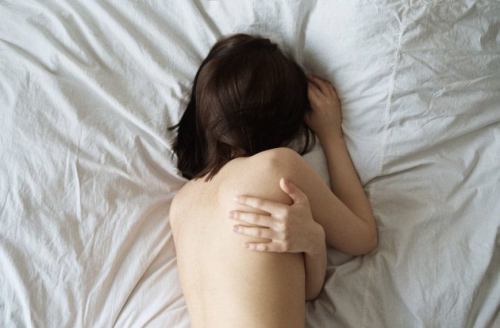No shade to Western medicine, but the Chinese variety is by far my fave. My acupuncturist saved my life (hyperbole alert!) during an excessively painful egg freezing cycle, and I now rely on her for everything from herbal medicine to relationship advice (only some of which she’s actually credentialed to provide, but meh).
Today, my superfan status has been justified with the discovery of a new study published in the journal Pain Medicine, which found that the Chinese medicine technique of acupressure can be used to effectively alleviate lower back pain. This is great news, as anyone who’s ever had lower back pain (read: literally anyone who is out of their 20s) knows how difficult it can be to function through the agony.
For the uninitiated, Los Angeles-based acupuncturist Jeiran Lashai, L.Ac., explains that acupressure is “the act of placing your hands on acupuncture points and applying varying levels of pressure.” This can be done by a practitioner or at home via self-massage. “If you read the traditional texts in Chinese medicine, the points are used to unblock and balance energy pathways in the body, but we really can break this down to how the body’s nerves, lymph, muscle, and connective tissue can be accessed to release and regulate hormones—for example, the body’s own painkillers such as endorphins,” Lashai explains.

In the study, participants were divided into three groups. One group—the control—continued along with whatever pain management tactics they were using, another utilized self-administered relaxing acupressure, and a third used self-administered stimulating acupressure. “Relaxing acupressure is what practitioners of Chinese medicine call ‘sedating,’ whereas stimulating is what we refer to as ‘tonifying,'” Lashai explains. While she says these methods also have names like “penetrating heaven coolness” and “setting the mountain on fire,” that doesn’t mean she or another practitioner is going to ice somebody or set them on fire. “You can think of it like this: If someone is exhausted, I am going to do my best to try and warm them and help boost their energy levels, whereas if someone has an injury, I may try and relieve some of the pressure or pain by ‘cooling’ the area and letting the blood flow better through it,” she says.
A lighter touch is considered relaxing while a heavier touch is considered stimulating.
Totally clear, right? Lashai admits it’s difficult to explain in layman’s terms. “When I am using acupuncture needles, this has to do with the depth of needle insertion and the direction that I move the needles,” she says. “To do this with acupressure, I would use heavier pressure to tonify and lighter pressure to sedate.” In other words, a lighter touch is considered relaxing while a heavier touch is considered stimulating—which makes sense in any language.
Participants in this particular study were trained in one or the other acupressure techniques, which they then performed on themselves for 27-30 minutes per day for six weeks. Both acupressure groups experienced greater relief when compared to the control group.
Given that typical back pain management relies on pain pills which can be addictive (hi, opioid epidemic) at worst and result in unpleasant side effects at best, non-medicinal therapies such as acupressure are a desirable alternative. For this reason, bodywork is increasingly popular beyond the lab.
Lashai says it’s easy to copycat the acupressure techniques used by study participants at home, too:
1. “Put your hands on your waist. Where your thumbs hit at your back, about halfway between your spine and sides, is a good point to apply pressure with your thumbs. Let your thumbs rest there with varying amounts of pressure for a minute or two.”
2. “Then, I like to take my hands and rub very vigorously on the lower back with the palms of my hands. This creates a little bit of a heat sensation and just helps warm up the tissues a little.”
3. “Next, I rub the back of my knee with my thumb, in the fold behind the leg—again, for a minute or two on each side.”
4. “Last, I like to end with kind of a ‘self-hug.’ If you go to hug yourself, you’ll often find that you have a few sore spots along the sides of your ribs (for women, this falls right near the bra line). This is a great point for moving blood flow and helping with general body pain and joint pain. It’s a neglected part of the body since it lies under the arms—and again, anything you can do to help move blood and lymph generally makes you feel better.”
Acupressure can also be used to relieve jaw tension, headaches, PMS, and depression, sinus issues, neck pain, and insomnia or sleeplessness. “And it’s safe,” Lashai says. “Really for anything, you can touch another human in a gentle way and they will feel better.”
Question: Do those trendy acupressure ear seeds really work? Plus, here’s how to plan the perfect day, according to Chinese medicine.
Sign Up for Our Daily Newsletter
Get all the latest in wellness, trends, food, fitness, beauty, and more delivered right to your inbox.
Got it, you've been added to our email list.











